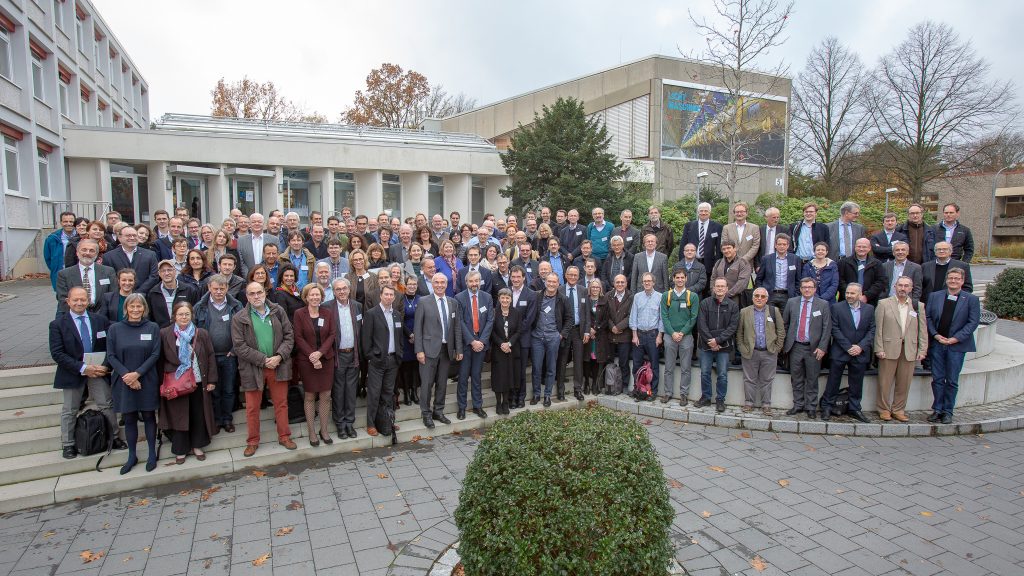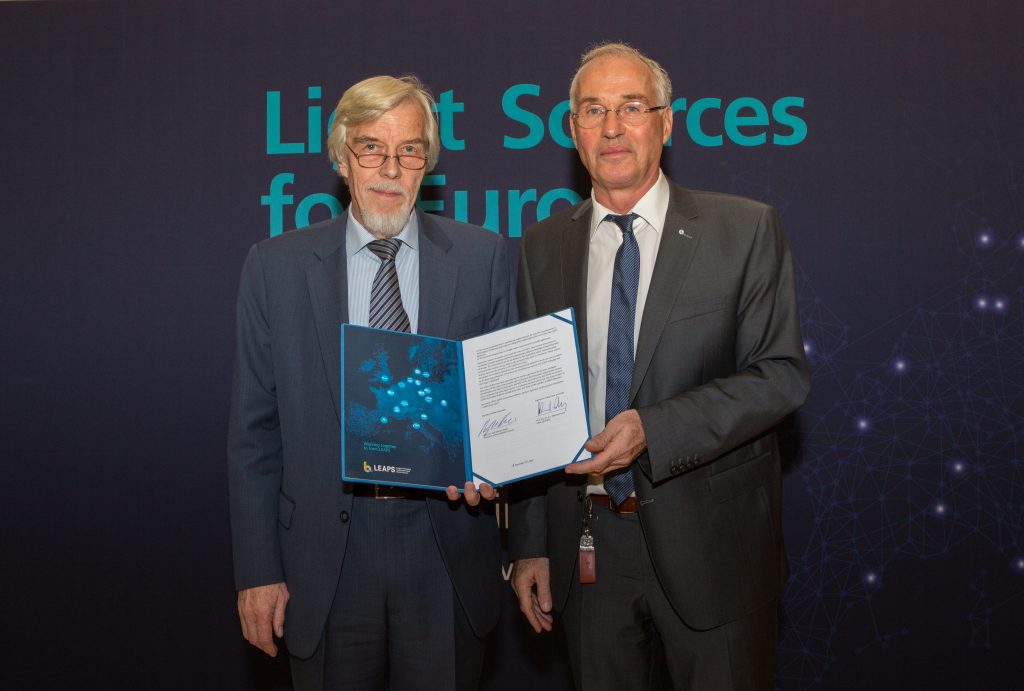First Plenary Meeting at DESY
On 12 and 13 November 2018 LEAPS held the first Plenary Meeting at DESY in Hamburg, where 13 pilot research projects were presented by the spokespersons of the different collaborations.
Philippe Froissard (EU) and representatives from national funding agencies also contributed to exploring different possibilities for funding common research projects.
Read the full meeting report here: Synchrotron Radiation News

The Plenary Meeting gathered more than 150 representatives from the 16 member facilities of LEAPS, coming from ten different countries and counting with the presence of the directors of all the facilities. The meeting showed the great progress of the collaboration. Helmut Dosch and Caterina Biscari, chair and vice-chair of LEAPS, opened the session summarising the activities undergone by the consortium that is giving service to 25 000 users in Europe.
– I’m very happy to see that joining forces between the light source facilities in Europe is making great progress and I’m convinced this is the way to make science shine even brighter in the future, says Helmut Dosch.
The LEAPS members have organised themselves in six different working groups, three related to new technology developments and three addressed to academic and industrial services and outreach.
– The first real result of this collaboration is the presentation in this meeting of 13 pilot research projects that cover a great variety of photon science fields. Our staff have effectively worked together to propose new solutions for better science and a greater impact in our society, concludes Caterina Biscari.
During a roundtable, with the participation of members and directors from different facilities, it was clearly expressed the goal of promoting common development projects that will implement smart specialization and will also enable more efficient management, as well as the need of avoiding overlapping activities in favour of collaborative initiatives.
A landscape document was also presented where the current status of facilities as well as their future plans was depicted. This document, that will be periodically updated, will become an essential tool for the roadmaps to be developed within LEAPS. The grand challenges to be faced in terms of scientific areas, like health, energy, food security, engineering & manufacturing, heritage science and fundamental science, were presented by the Strategy Groups.
In preparation for one of the final calls of H2020, dedicated to pilot activities in view of the future Horizon Europe, proposals of pilot projects have been prepared and presented in the second day of the meeting.
Eight of them tackle technological and scientific needs, including the development of:
- superflat mirrors that will explore basic limits of mirrors correction, will propose new metrology tools and will implement adequate processes for industrial manufacture.
- next-generation X-ray gratings with increased flexibility for soft X-ray optical devices.
- spectroscopy germanium detector for X-ray absorption experiments with a huge impact on environment and catalysis.
- detectors’ toolbox to make easier the adaptability of these instruments to new requirements, interfaces and data acquisition systems.
- experiments’ environment improvements such as new positioning and scanning systems as well as a common standard for room temperature structural research microcrystals.
- data reduction and compression technologies that will cope with the needs of storing a higher amount of data, resulting in smarter and more efficient systems.
- a strategic blueprint regarding the new future needs of information technology in FELs and storage rings.
- cheaper insertion devices to better adapt to FELs and to increase photon energy, improve polarization control and radiation hardness of insertion devices.
Five pilot projects are addressed to attract and promote new academic and industrial users:
- innovation process for better industrial engagement, including beamtime service, technology valorisation and outreach.
- specific activities devoted to SMEs services, enabling a central entry point for all the LEAPS members.
- impact assessment methodology, continuing with the work being done in H2020 RI Pathways project.
- a user-friendly e-infrastructure for having a standardized instrumentation catalogue of European lightsources, following the task done in CALIPSOplus.
- creating scientific focal points for new users’ communities in countries where FELs or storage ring lightsources are not present.
Representatives from eight of the total ten National Funding Agencies, together with Philippe Froissard, Deputy Head of the Research Infrastructure Unit of the directorate on Open Innovation & Open Science of the European Commission, participated in a roundtable about the funding possibilities of the LEAPS project. All of them agree that the LEAPS network is a great success of how facilities can organise themselves for better global results.
Giorgio Rossi, Chair of the European Strategy Forum on Research Infrastructures, ESFRI, gave a talk on the importance of coordination between research infrastructures to enhance the outcome of the developments at RI’s and the science performed there.
In the evening a reception was given by the Free and Hanseatic City of Hamburg in the atrium of the State Library hosted by state secretary Dr Eva Gümbel, from the Ministry of Science, Research and Equalities.

